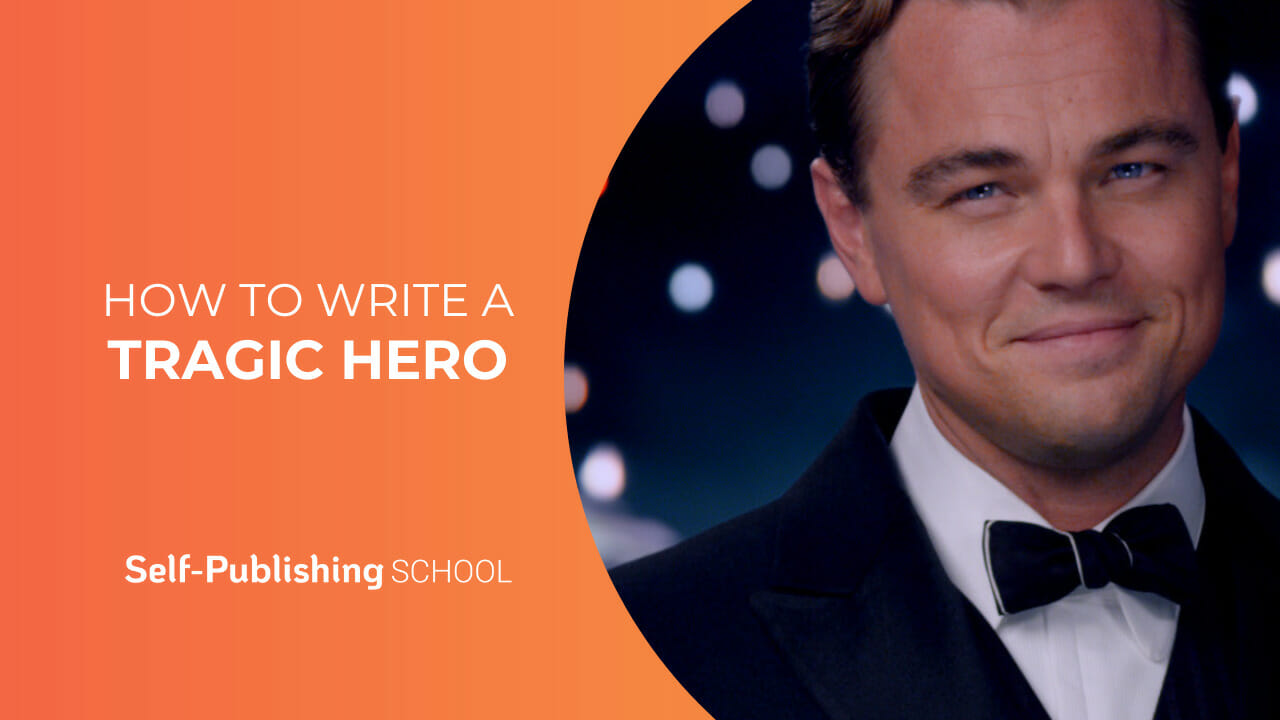Ah, the tragic hero. Our literary darling that makes us scream, laugh, cry, or all three at once. In any case, expect snot.
From Hamlet’s melancholic musings to Willy Loman’s sales pitch gone awry, these characters have captured hearts for centuries. Creating a character that can make readers feel all the feels at once isn’t easy.
So, grab a pen and a box of tissues, and let’s look at some do’s and don’ts of crafting a tragic hero that will have your readers on the edge of their seats (or screaming and crying into their pillows).
Table of Contents
What is a tragic hero?
According to Aristotle’s Poetics, a tragic hero is a literary character who makes a judgment error that inevitably leads to their own destruction. Particularly, this error in judgment is that the character fully believes they are doing the right thing.
Often, a tragic hero dies (either literally or in some figurative way), due to that choice.
The tragic hero is a complex and dynamic character who is typically the protagonist of the story. They are usually a person of high standing and great reputation who falls from grace (or dies) due to a tragic flaw.
Let’s look at the characteristics of a tragic hero and some tips on how to write one.

Here are four elements you can expect to see in a tragic hero’s story.
1. High standing
A tragic hero almost always starts at the top. They might be wealthy, noble, well-liked, intelligent, and other things worthy of admiration. You’ll see heroes in positions of power, as community and thought leaders, and as highly influential in their sphere.
This high perch only gives them further to fall.
2. Tragic flaw
The second characteristic of a tragic hero is that they possess a tragic flaw, or hamartia. This is the one thing that ultimately leads to their downfall. This tragic flaw can be anything from pride and ambition, to a lack of judgment or self-control.
It is important to choose a tragic flaw that is believable and consistent with the character’s personality and actions. In Oedipus Rex, Oedipus’ tragic flaw is his stubbornness and his refusal to believe that he may have committed the crime he is trying to solve. In Death of a Salesman, Willy Loman’s tragic flaw is his unrealistic view of himself as a successful salesman and his inability to accept the reality of his failing career.
3. Reversal of fortune
The third characteristic of a tragic hero is that they experience a reversal of fortune, or peripeteia. This is the point in the story where the tragic hero’s fortunes take a turn for the worse. It is important to choose a reversal of fortune that is dramatic and impactful, and that is a direct result of the tragic hero’s tragic flaw.
In the Marvel Cinematic Universe, our tragic hero Tony Stark’s reversal of fortune is when his fatal flaw (his desire for redemption and need to prove himself), leads to his ultimate sacrifice in Avengers: Endgame (spoilers. if ya know, ya know).
4. Moment of recognition
The fourth characteristic of a tragic hero is that they have a moment of recognition, or anagnorisis. This is the point in the story where the hero realizes the true nature of their actions.
This moment should be emotionally powerful. In “Oedipus Rex,” this moment is when Oedipus realizes he did kill his father and marry his mother (gross, babe).
Examples of tragic heroes
Here are a few examples of a tragic hero in popular writing.
The Great Gatsby by F. Scott Fitzgerald
Gatsby is a self-made man, risen from humble beginnings to become one of the wealthiest figures in New York.
His fatal flaw is his overwhelming obsession with Daisy, a married woman.
This tragic flaw leads him into lying about his past, throwing extravagant parties, and committing murder in the hopes of winning Daisy back.
His reversal of fortune is when Daisy ultimately chooses her husband over him (duh), and Gatsby is shot and killed by her husband.
The moment of recognition comes when Gatsby finally realizes his dream of winning Daisy back is impossible, and he accepts his fate.
This story is a commentary on the American Dream and self-destructive nature of pursuing wealth and status. Gatsby goes from being a successful, nearly famous, man to being a dead man, all because of his obsession and “pursuit of love.”
Death of a Salesman by Arthur Miller
Willy Loman is our tragic hero in Death of a Salesman.
He seeks success in order to provide for his family. He believes so strongly in this dream, that his inability to accept reality ultimately leads to his self-destruction.
Despite his best efforts, Willy doesn’t achieve that success, and his mental and emotional deterioration ultimately results in him taking his own life.
Willy’s tragic flaw is his refusal to accept failure and his blind belief in “The American Dream.”
Casablanca
In the film Casablanca, the tragic hero is Rick Blaine.
Rick’s fatal flaw is that he wants to live a life of neutrality, avoiding commitment. But when a former lover returns to his life, seeking escape from Nazis with her husband, Rick’s faced with a dilemma.
He has to choose between his own self-interest, or helping his former lover and her husband, who are fighting for a noble cause. He’s torn between his love for her and his sense of duty to the greater good.
Rick’s moment of recognition is when he sacrifices his own happiness for the greater good, helping the couple escape and joining the fight.
Ultimately, his tragic flaw of avoidance and detachment leads to his downfall, in that he loses the love of his life, but finds his redemption through his selfless sacrifice.
How to write a tragic hero step-by-step
Here are a few tips for writing your own tragic hero.
1. Design your character with a fatal flaw
Your tragic hero needs a fatal, tragic flaw to lead to their downfall. There are many forms this flaw can take. Hubris, pride, blind ambition, willful ignorance. It simply must be a flaw that will act with the plot to lead the character into their own demise.
2. Make them sympathetic and complex
Like we mentioned earlier, a tragic hero usually starts at the top. Either financially, socially, or just in their own personal reckoning, they start out the story doing just fine. They are often extremely likable to the audience.
Their flaw should be somewhat relatable, even incredibly sensible.
Your character should also be complex, as any protagonist should be. There’s an added layer of an irony when the other shoe falls—why does this downfall happen to this particular character?
3. Nail the moment of recognition
When that other shoe does drop, it should resonate. We should all hear the stomp and feel the vibration in the floor. It should be that heart-stopping, “oh my god” moment where we see the character realize that they’ve effed it all up, in pursuit of their perceived correctness.
This moment is almost a punchline. It should stand out and make readers feel deeply for your character’s struggle as they process that they have done this to themselves.
5. Make sure it’s the character’s fault
That said, the character should be correct in seeing that they have caused this. The downfall should be directly related to their personal weaknesses and the actions they have taken. That is what makes a hero tragic.
Who is the tragic hero?
A tragic hero is a complex, sympathetic character who creates their own destruction through innocent ignorance and the strong belief that they are doing the right thing.
If you write it properly, your tragic hero story should be quite shattering for the readers. We should love the character, and we should feel a deep stab of irony at the moment of recognition.
What do you think—is a tragic hero the right protagonist for your story?
Happy writing!
